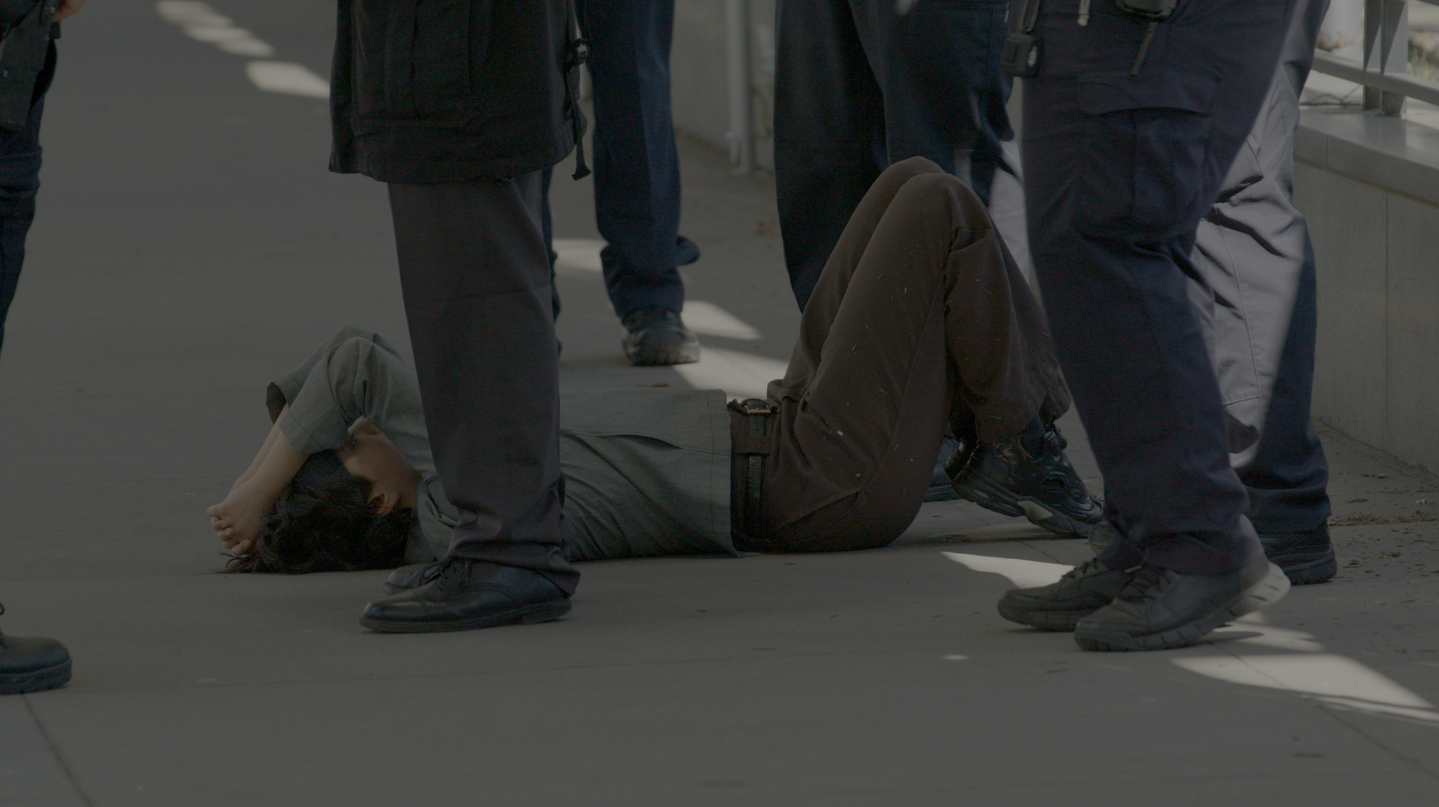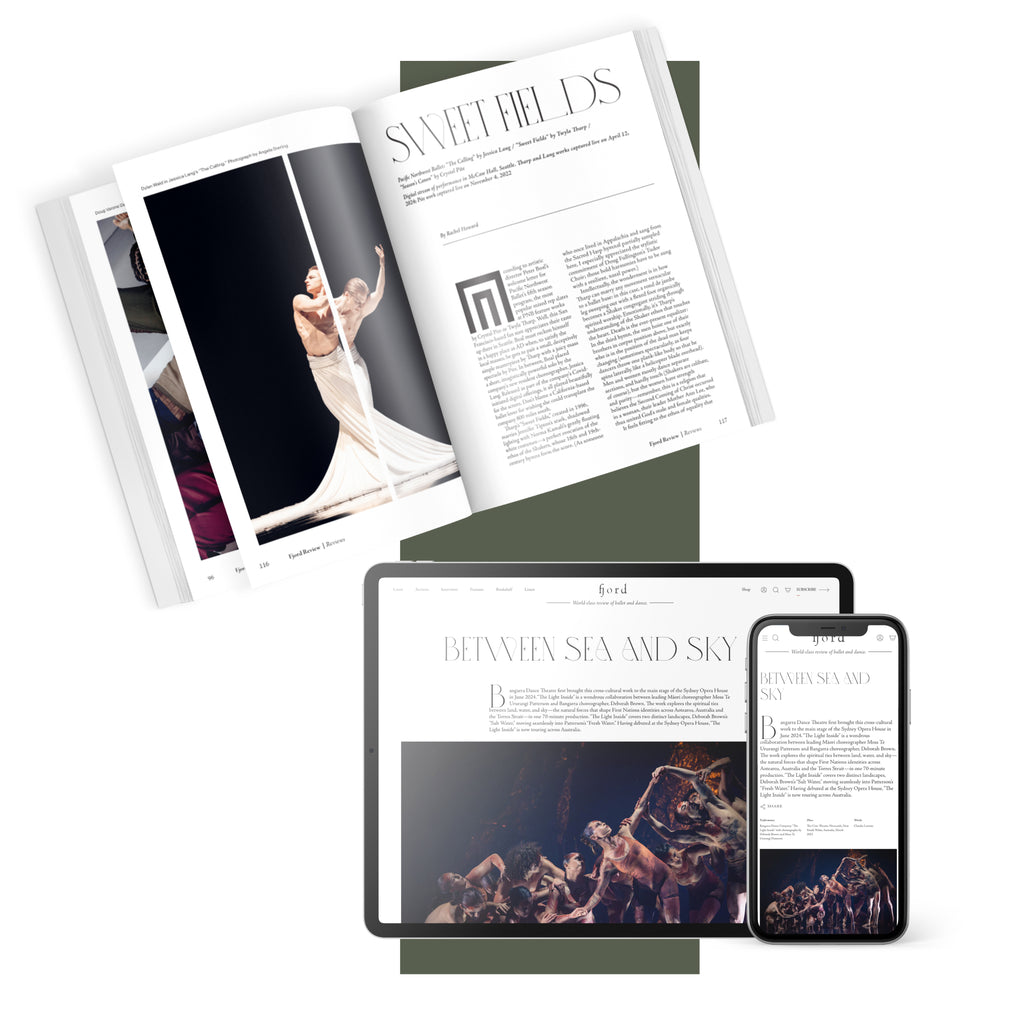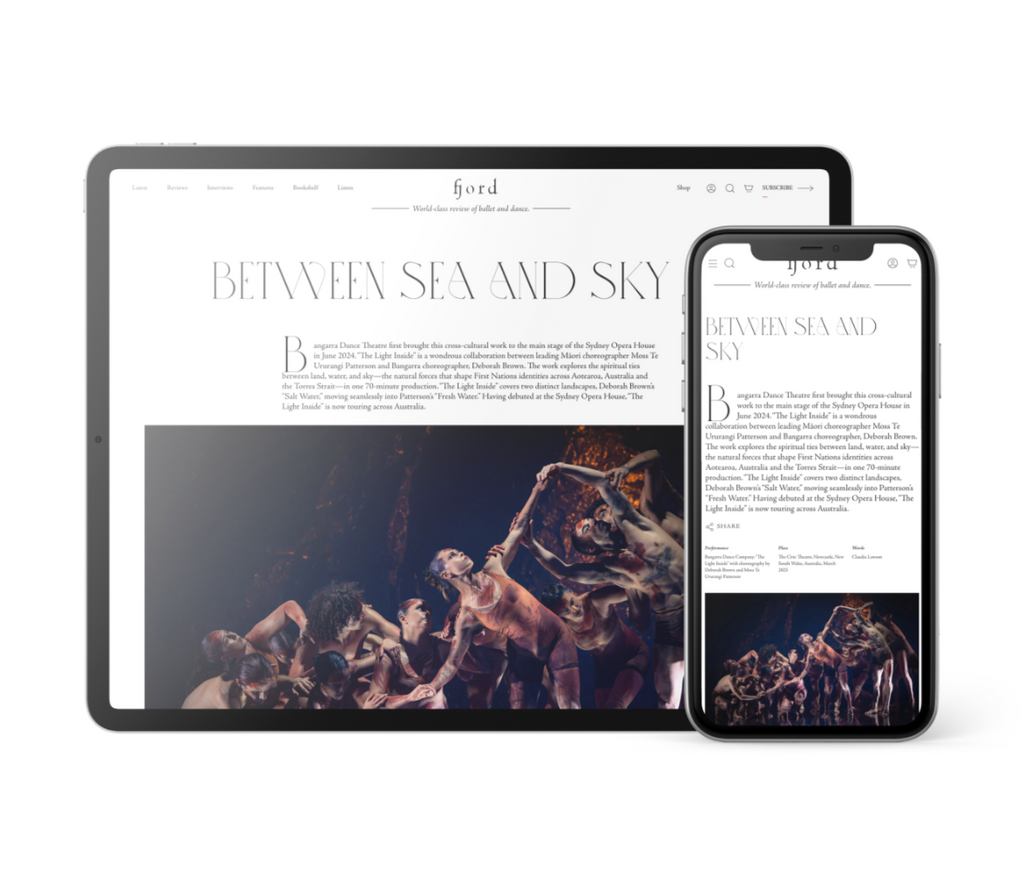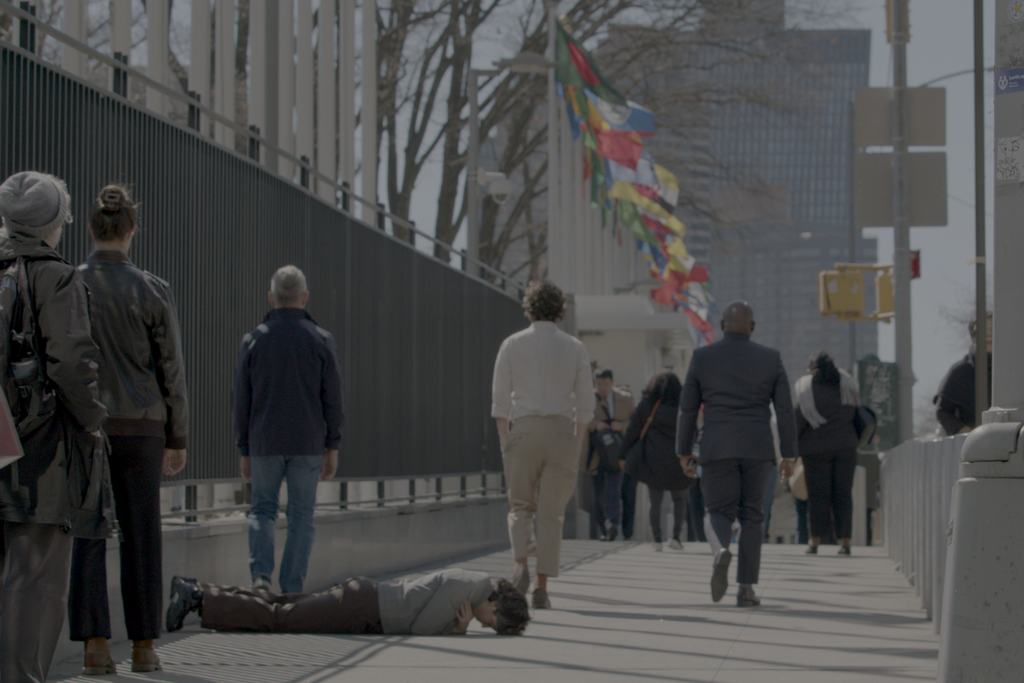As I sat there watching them, I was reminded of No Other Land, a film that documents the destruction, displacement, and resilience of the Masafer Yatta communities and tells the story of the friendship between Basel Adra, a Palestinian activist, and Yuval Abraham, an Israeli journalist. Despite winning this year’s Oscar for Best Documentary, the film has not been available from streaming services. So I saw the film in person, at Brooklyn Academy of Music, the Friday before I saw “Rolling Piece;” Batsheva Dance Company was performing “Momo” in the other half of the building.
In the film, bulldozers continually rumble on the horizon, rolling toward the communities in an ominous overture. When they arrive and begin tearing apart homes in front of the families that live in them, a chaotic choreography ensues in which mothers, fathers, and children scramble to rescue a few belongings before all is lost. Watching as Laguna’s body rolled toward the UN, it seemed as if the police perceived her as a threat equal to those bulldozers. I wondered if they could still think of her that way if they had seen the film or had experienced a similar, dehumanizing action waged against them. Or perhaps they had, and the lack of rational proportion in their response could be blamed on cycles of trauma perpetuating themselves.
Right now, so many dance artists are trying to combat the senseless violence and dissonance of this moment in time with the beauty inherent in our art form. Several times in the last six months, experiences of dance in the theater have buoyed me with their bold, artistic expressions of humanity and love and joy in the face of so much misanthropy and fear. I have been grateful for every one of them, including most recently the hair raising solos, “Immigrant” and “Revolt,” that Virginie Mécène recreated for Martha Graham Dance Company in April, with incisive performances from Xin Ying and Leslie Williams.
But in pushing outside the more comfortable constraints of the theater, and its often affluent, like-minded audience, “Rolling Piece,” took its embodied provocation out of the echo chamber and into lesser-known territory. Laguna’s audacity to put her body in the way of unchallenged authority and unquestioned order threw me a different kind of life vest that I am clinging to now: courage.
Given that the American president issued an executive order on policing last week, with the header, “STRENGTHENING AND UNLEASHING AMERICA’S LAW ENFORCEMENT TO PURSUE CRIMINALS AND PROTECT INNOCENT CITIZENS,” as well as this government’s record thus far for detaining, deporting, and otherwise seeking punitive harm to those protesting anything related to their agenda, Laguna’s performance has continued to speak to me.
In the end, no arrests were made during “Rolling Piece.” Instead, the police gave Laguna a warning after which she graciously thanked them, presumably for playing the unwitting part of “authority intervention,” in her work.
In her own words: “I got up. I walked down to the last flag, the Palestinian flag, and stated the credits of the performers and crew, and Lieutenant Gonzalez.”











comments